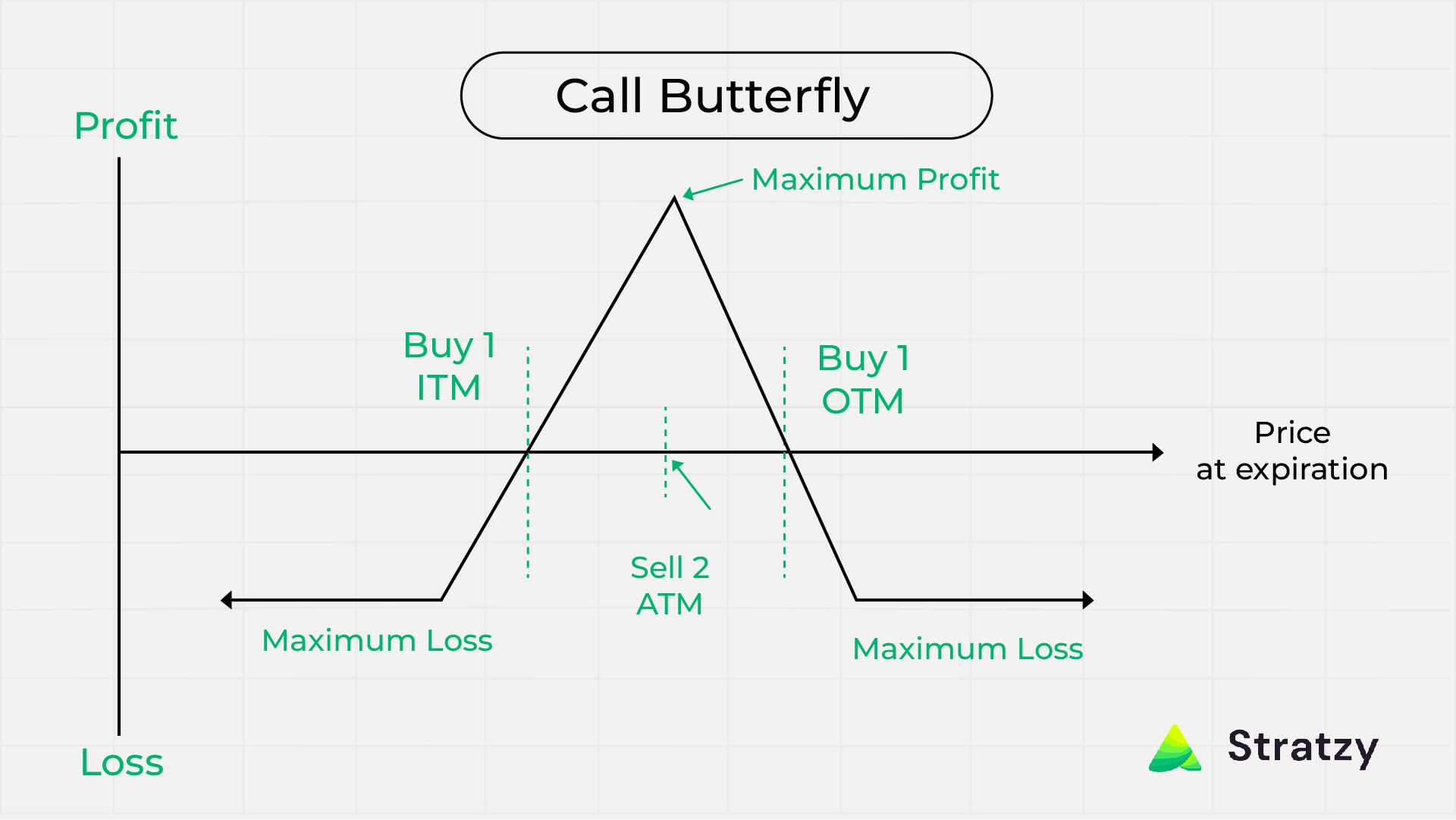Call Butterfly Strategy

The Call Butterfly strategy is a popular options trading strategy used by traders to profit from a stock's limited price movement. This strategy involves buying and selling call options at different strike prices to create a spread that has a limited risk and reward profile.
In this article, we will explore the Call Butterfly strategy, its mechanics, advantages, and examples.
What is the Call Butterfly Strategy?
The Call Butterfly strategy is a type of options trading strategy where traders buy and sell call options with the same expiration date but different strike prices. The goal of the strategy is to profit from a stock's limited price movement while limiting the risk of loss.
A Call Butterfly spread involves buying one in-the-money (ITM) call option, selling two at-the-money (ATM) call options, and buying one out-of-the-money (OTM) call option. The result is a spread with a limited risk and reward profile, similar to a butterfly's wings.
The Call Butterfly strategy's profit potential is limited to the difference between the strike prices of the ATM options and the net premium paid or received for the spread. At the same time, the maximum loss is limited to the net premium paid for the spread.
Mechanics of the Call Butterfly Strategy
Let's say a stock is trading at INR 500, and an options trader believes the stock's price will remain between INR 480 and INR 520 over the next month. The trader could use a Call Butterfly strategy to profit from this limited price movement.
Here's how the Call Butterfly strategy would work in this scenario:
- Buy one ITM call option with a strike price of INR 480 for a premium of INR 40
- Sell two ATM call options with a strike price of INR 500 for a premium of INR 20 each
- Buy one OTM call option with a strike price of INR 520 for a premium of INR 5
The net premium paid for the spread would be INR 15 ((40 - 20 - 20 + 5) x 100 shares), and the maximum profit potential would be INR 5 ((500 - 480) - 15) x 100 shares. At the same time, the maximum loss would be INR 15 (net premium paid).
For a better understanding, the payoff matrix of this strategy looks like this:

Advantages of the Call Butterfly Strategy
The Call Butterfly strategy offers several advantages, including:
- Limited risk: The maximum loss for the Call Butterfly strategy is limited to the net premium paid for the spread.
- Limited reward: The profit potential for the Call Butterfly strategy is limited to the difference between the strike prices of the ATM options and the net premium paid or received for the spread.
- Flexibility: The Call Butterfly strategy can be used in various market conditions, including bullish, bearish, or neutral.
- Hedging: The Call Butterfly strategy can be used to hedge against other positions in the trader's portfolio.
Examples of the Call Butterfly Strategy
Let's look at another example of the Call Butterfly strategy in action.
Assume that a trader believes a stock trading at INR 1,000 will remain between INR 950 and INR 1,050 for the next month. The trader can use the Call Butterfly strategy to profit from this limited price movement.
Here's how the Call Butterfly strategy would work in this scenario:
- Buy one ITM call option with a strike price of INR 950 for a premium of INR 70
- Sell two ATM call options with a strike price of INR 1,000 for a premium of INR 30 each
- Buy one OTM call option with a strike price of INR 1,050 for a premium of INR 10
The net premium paid for the spread would be INR 20 ((70 - 30 - 30 + 10) x 100 shares), and the maximum profit potential would be INR 30 ((1,000 - 950) - 20) x 100 shares. At the same time, the maximum loss would be INR 20 (net premium paid).
If the stock price remains between INR 950 and INR 1,050 at expiration, the trader would profit from the Call Butterfly strategy. If the stock price rises above INR 1,050 or falls below INR 950, the trader would incur a loss.
It's essential to note that the Call Butterfly strategy's profitability depends on the stock price remaining within a specific range. If the stock price moves significantly in one direction, the strategy's profitability would decrease.
Conclusion
The Call Butterfly strategy is a popular options trading strategy used to profit from a stock's limited price movement while limiting the risk of loss. This strategy involves buying and selling call options at different strike prices to create a spread with a limited risk and reward profile.
The Call Butterfly strategy offers several advantages, including limited risk, limited reward, flexibility, and hedging. However, the strategy's profitability depends on the stock price remaining within a specific range.
Traders should consider their risk tolerance, market conditions, and trading objectives before implementing the Call Butterfly strategy or any other options trading strategy.
Learn Option series next reads:



